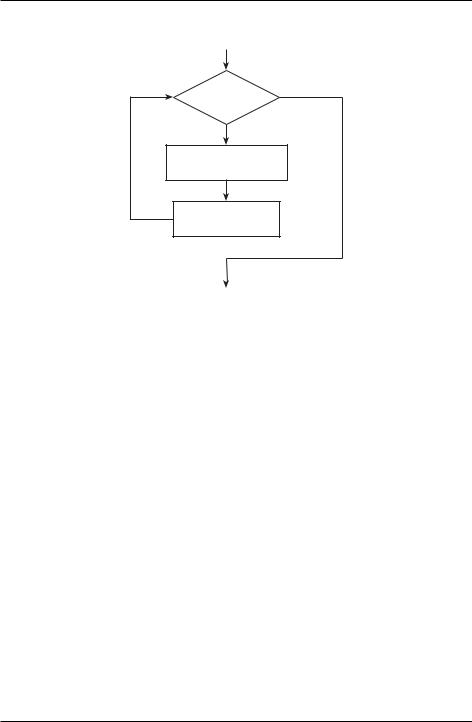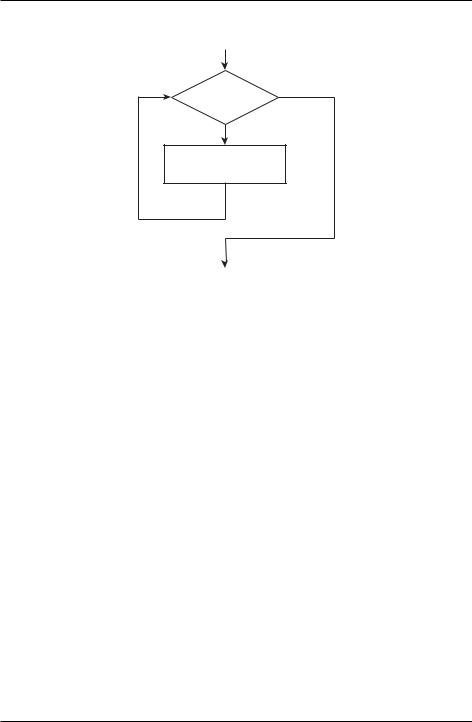
- •Introduction
- •Introduction to Python and its use in science
- •Launching Python
- •Installing Python on your computer
- •The Canopy window
- •The Interactive Python Pane
- •Interactive Python as a calculator
- •Python Modules
- •Variables
- •Importing Modules
- •Getting help: documentation in IPython
- •Programming is a detail-oriented activity
- •Exercises
- •Strings, Lists, Arrays, and Dictionaries
- •Strings
- •Lists
- •NumPy arrays
- •Dictionaries
- •Random numbers
- •Exercises
- •Input and Output
- •Keyboard input
- •Screen output
- •File input
- •File output
- •Exercises
- •Plotting
- •An interactive session with pyplot
- •Basic plotting
- •Logarithmic plots
- •More advanced graphical output
- •Exercises
- •Conditionals and Loops
- •Conditionals
- •Loops
- •List Comprehensions
- •Exercises
- •Functions
- •Methods and attributes
- •Exercises
- •Curve Fitting
- •Exercises
- •Numerical Routines: SciPy and NumPy
- •Special functions
- •Linear algebra
- •Solving non-linear equations
- •Solving ODEs
- •Discrete (fast) Fourier transforms
- •Exercises
- •Installing Python
- •IPython Notebooks
- •Python Resources

Introduction to Python for Science, Release 0.9.23
In [11]: a>2
Out[11]: True
In [12]: not a>2
Out[12]: False
Logical statements like those above can be used in if, elif, and, as we shall see below, while statements, according to your needs.
6.2 Loops
In computer programming a loop is statement or block of statements that is executed repeatedly. Python has two kinds of loops, a for loop and a while loop. We first introduce the for loop and illustrate its use for a variety of tasks. We then introduce the while loop and, after a few illustrative examples, compare the two kinds of loops and discuss when to use one or the other.
6.2.1 for loops
The general form of a for loop in Python is
for <itervar> in <sequence>: <body>
where <intervar> is a variable, <sequence> is a sequence such as list or string or array, and <body> is a series of Python commands to be executed repeatedly for each element in the <sequence>. The <body> is indented from the rest of the text, which difines the extent of the loop. Let’s look at a few examples.
for dogname in ["Max", "Molly", "Buster", "Maggie", "Lucy"]: print(dogname)
print(" Arf, arf!") print("All done.")
Running this program produces the following output.
In [1]: run doggyloop.py
Max
Arf, arf!
Molly
Arf, arf!
6.2. Loops |
105 |

Introduction to Python for Science, Release 0.9.23
Buster
Arf, arf!
Maggie
Arf, arf!
Lucy
Arf, arf!
All done.
The for loop works as follows: the iteration variable or loop index dogname is set equal to the first element in the list, "Max", and then the two lines in the indented body are executed. Then dogname is set equal to second element in the list, "Molly", and the two lines in the indented body are executed. The loop cycles through all the elements of the list, and then moves on to the code that follows the for loop and prints All done.
When indenting a block of code in a Python for loop, it is critical that every line be indented by the same amount. Using the <tab> key causes the Code Editor to indent 4 spaces. Any amount of indentation works, as long as it is the same for all lines in a for loop. While code editors designed to work with Python (including Canopy and Spyder) translate the <tab> key to 4 spaces, not all text editors do. In those cases, 4 spaces are not equivalent to a <tab> character even if they appear the same on the display. Indenting some lines by 4 spaces and other lines by a <tab> character will produce an error. So beware!
The figure below shows the flowchart for a for loop. It starts with an implicit conditional asking if there are any more elements in the sequence. If there are, it sets the iteration variable equal to the next element in the sequence and then executes the body—the indented text—using that value of the iteration variable. It then returns to the beginning to see if there are more elements in the sequence and continues the loop until there is none remaining.
6.2.2 Accumulators
Let’s look at another application of Python’s for loop. Suppose you want to calculate the sum of all the odd numbers between 1 and 100. Before writing a computer program to do this, let’s think about how you would do it by hand. You might start by adding 1+3=4. Then take the result 4 and add the next odd integer, 5, to get 4+5=9; then 9+7=16, then 16+9=25, and so forth. You are doing repeated additions, starting with 1+3, while keeping track of the running sum, until you reach the last number 99.
In developing an algorithm for having the computer sum the series of numbers, we are going to do the same thing: add the numbers one at a time while keeping track of the running sum, until we reach the last number. We will keep track of the running sum with the variable s, which is called the accumulator. Initially s=0, since we haven’t adding
106 |
Chapter 6. Conditionals and Loops |

Introduction to Python for Science, Release 0.9.23
start
more items |
|
in seq? |
No |
Yes |
|
<intervar> = |
|
next item in seq |
|
<body> |
|
finish
Figure 6.4: Flowchart for for-loop.
any numbers yet. Then we add the first number, 1, to s and s becomes 1. Then we add then next number, 3, in our sequence of odd numbers to s and s becomes 4. We continue doing this over and over again using a for loop while the variable s accumulates the running sum until we reach the final number. The code below illustrates how to do this.
1s = 0
2 for i in range(1, 100, 2):
3s = s+i
4print(s)
The range function defines the list [1, 3, 5, ..., 97, 99]. The for loop successively adds each number in the list to the running sum until it reaches the last element in the list and the sum is complete. Once the for loop finishes, the program exits the loop and the final value of s, which is the sum of the odd numbers from 1 to 99, is printed out. Copy the above program and run it. You should get an answer of 2500.
6.2.3 while loops
The general form of a while loop in Python is
6.2. Loops |
107 |

Introduction to Python for Science, Release 0.9.23
while <condition>: <body>
where <condition> is a statement that can be either True or False and <body> is a series of Python commands that is executed repeatedly until <condition> becomes false. This means that somewhere in <body>, the truth value of <condition> must be changed so that it becomes false after a finite number of iterations. Consider the following example.
Suppose you want to calculate all the Fibonacci numbers smaller than 1000. The Fibonacci numbers are determined by starting with the integers 0 and 1. The next number in the sequence is the sum of the previous two. So, starting with 0 and 1, the next Fibonacci number is 0 + 1 = 1, giving the sequence 0; 1; 1. Continuing this process, we obtain 0; 1; 1; 2; 3; 5; 8; ::: where each element in the list is the sum of the previous two. Using a for loop to calculate the Fibonacci numbers is impractical because we do not know ahead of time how many Fibonacci numbers there are smaller than 1000. By contrast a while loop is perfect for calculating all the Fibonacci numbers because it keeps calculating Fibonacci numbers until it reaches the desired goal, in this case 1000. Here is the code using a while loop.
x, y = 0, 1 while x < 1000:
print(x)
x, y = y, x+y
We have used the multiple assignment feature of Python in this code. Recall that all the values on the left are assigned using the original values of x and y.
The figure below shows the flowchart for the while loop. The loop starts with the evaluation of a condition. If the condition is False, the code in the body is skipped, the flow exits the loop, and then continues with the rest of the program. If the condition is True, the code in the body—the indented text—is executed. Once the body is finished, the flow returns to the condition and proceeds along the True or False branches depending on the truth value of the condition. Implicit in this loop is the idea that somewhere during the execution of the body of the while loop, the variable that is evaluated in the condition is changed in some way. Eventually that change will cause the condition to return a value of False so that the loop will end.
One danger of a while loop is that it entirely possible to write a loop that never terminates—an infinite loop. For example, if we had written while y > 0:, in place of while x < 1000:, the loop would never end. If you execute code that has an infinite loop, you can often terminate the program from the keyboard by typing ctrl-C a couple of times. If that doesn’t work, you may have to terminate and then restart Python.
108 |
Chapter 6. Conditionals and Loops |

Introduction to Python for Science, Release 0.9.23
start
<condition>
False
True
<body>
(change condition)
finish
Figure 6.5: Flowchart for while loop.
For the kind of work we do in science and engineering, we generally find that the for loop is more useful than the while loop. Nevertheless, there are times when using a while loop is better suited to a task than is a for loop.
6.2.4 Loops and array operations
Loops are often used to sequentially modify the elements of an array. For example, suppose we want to square each element of the array a = np.linspace(0, 32, 1e7). This is a hefty array with 10 million elements. Nevertheless, the following loop does the trick.
import numpy as np
a = np.linspace(0, 32, 1e7) print(a)
for i in range(len(a)): a[i] = a[i]*a[i]
print(a)
Running this on my computer returns the result in about 8 seconds—not bad for having performed 10 million multiplications. Of course we could have performed the same calculation using the array multiplication we learned in Chapter 3 (Strings, Lists, Arrays, and Dictionaries). Here is the code.
6.2. Loops |
109 |
